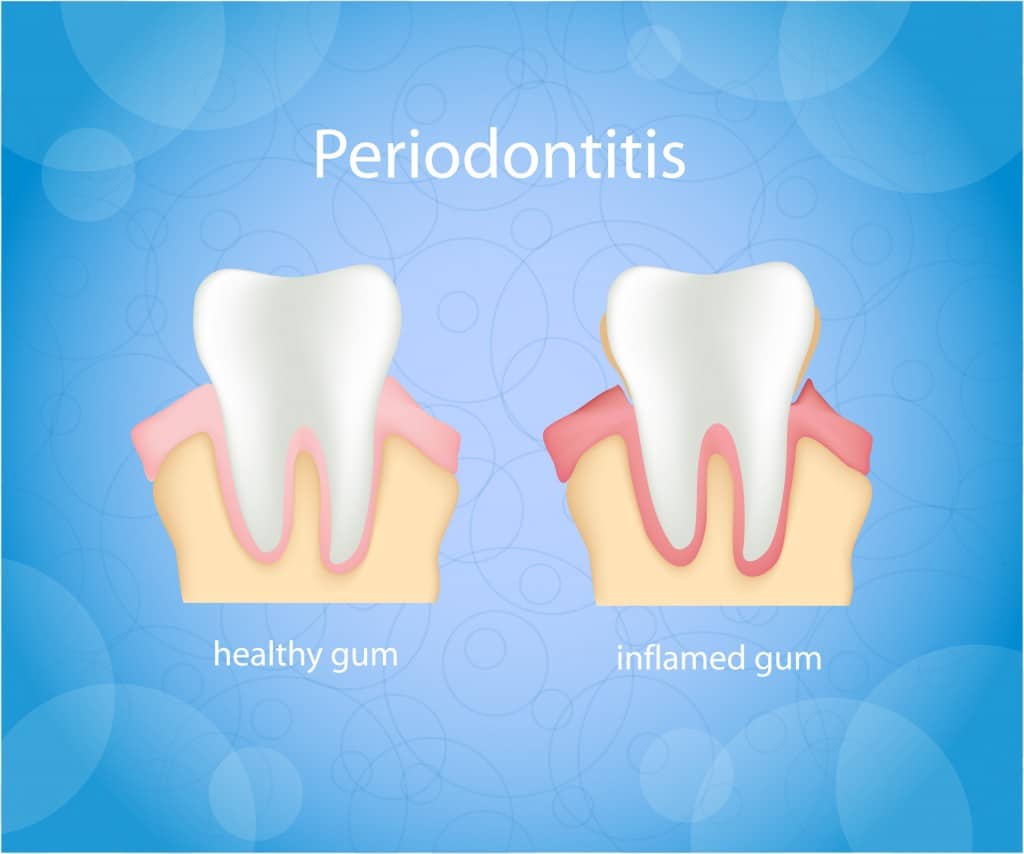Gum health is an essential part of good oral hygiene. When gum problems arise, they can be uncomfortable and even lead to more serious dental problems, like tooth loss or infection. Cutting edge solutions using lasers have given dentists and periodontists new technology to fight gum problems. Let’s explore this innovative procedure, and how laser therapy for gums can help fight bacteria.
Laser Therapy for Gums: Laser Periodontal Therapy Explained
Laser therapy for gums, or laser periodontal therapy, is a minimally invasive dental procedure that uses laser technology to treat various gum-related issues. It is a gentle and precise method that has gained popularity due to its effectiveness and reduced discomfort for patients. This is one of several gum therapies designed to stop bacterial growth and infection. Another common treatment is scaling and root planing, which uses specialized tools to remove plaque and bacteria around and under the gum line without surgery.
The primary objective of laser therapy for gums is to target and eliminate harmful bacteria, damaged tissue, and other dental concerns without the need for traditional surgery. By using concentrated beams of light, dentists can perform delicate and intricate procedures within the oral cavity.
BDG provides a variety of treatment to restore the health of your gums
Learn more about gum treatments >
What Does Laser Periodontal Therapy Treat?
Laser therapy for gums is used to treat a variety of conditions that affect the gums. Healthy gums are a pinkish color, and they shouldn’t bleed or hurt when pressed or during flossing. If the gums become irritated, red, or puffy, it’s a sign of periodontal disease. Laser therapy provides a way to heal this damage, without using invasive surgical techniques.
1. Gum Disease
Laser therapy can be effective in treating gum disease, including gingivitis and periodontitis. The laser can selectively remove infected or damaged tissue and bacteria under the gumline, preventing the bacteria from damaging other tissues or creating other issues, like tooth infections. This also helps to promote the regeneration of healthy gum tissue.
2. Gum Recontouring
Patients with uneven or excessive gum tissue, often referred to as a “gummy smile,” can benefit from laser therapy to reshape and contour their gum line. Though there are no negative health effects of excessive gum tissue, it can affect some people’s confidence, and gum recontouring can help.
3. Removal of Oral Lesions
Laser therapy can safely and precisely remove oral lesions, such as canker sores and benign tumors, minimizing discomfort and promoting faster healing. Cancerous tumors or growths generally require more study and additional treatment to prevent mouth cancer from spreading.
What Types of Lasers Are Used?
There are many different types of lasers in the world. In simple terms, a laser is a very focused and amplified beam of light. Some lasers simply create a mostly harmless beam of light, like laser pointers. Others are strong enough to cut through metal, and the strongest lasers are used in quantum physics studies, among other things. Clearly, there’s a lot of variation!
A number of different types of laser are used in laser periodontal therapy, each with unique characteristics and advantages. Each of these lasers are contained in specialized tools that are designed for gum treatment. These lasers are strong and focused enough to eliminate damaged or infected tissue, but won’t damage healthy tissue.
Let’s take a closer look at the most common laser types used in gum treatment.
Erbium Lasers
Erbium lasers, also called Er:YAG lasers, are a type of YAG (yttrium aluminum garnet) laser. These lasers are known for their precision in removing soft tissue with minimal thermal damage to surrounding tissues. Since this type of laser is absorbed by water as well as hydroxyapatite, it can be used for procedures on the skin or harder tissues, like teeth. This makes them ideal for removing decay or infected tissue on the gums or the teeth.
Nd:YAG Lasers
Nd:YAG lasers are another type of YAG laser using neodymium instead of erbium. These types of lasers are highly versatile, and are used across a wide variety of applications, from dentistry to eye surgery to manufacturing. These lasers are precise enough to perform very exact surgeries on sensitive, soft tissues like the eye or gums, but they are also strong enough to remove infected tissue of the teeth.
CO2 Lasers
Carbon-dioxide lasers, or CO2 lasers, are one of the oldest types of lasers, and it is still among the most widely used. CO2 lasers also have excellent precision and are often employed in soft-tissue surgeries of many types, including gum surgery. Once damaged or unwanted tissue is removed, the laser treatment encourages healthy growth of tissue and faster healing.
Traditional Surgical Gum Treatment vs. Laser Therapy For Gums
Traditionally, serious gum-related problems were often treated with conventional surgery, involving scalpels and sutures. However, laser therapy for gums presents several advantages when compared to traditional surgical gum treatment.
1. Not Invasive
Laser therapy is not invasive, meaning it involves no cutting and minimal tissue removal. This reduces postoperative discomfort and leads to faster recovery times for patients.
2. Reduced Discomfort
Patients often experience less pain and discomfort during and after laser gum treatment, compared to traditional surgery. Anesthesia requirements are also minimized.
3. Precision
Lasers allow for precise targeting of specific problem areas while preserving healthy tissue. This precision results in better outcomes and minimal damage to surrounding structures.
4. Faster Healing
The reduced trauma to the gums means that healing times are typically shorter with laser therapy. Patients can return to their regular activities sooner.
5. Reduced Risk of Infection
Lasers sterilize the treatment area as they work, reducing the risk of infection during and after the procedure.
Laser periodontal therapy is a modern and effective approach to treating various gum-related issues. With its versatility, reduced discomfort, and minimal invasiveness, it has become a preferred choice for both patients and dentists alike. If your gums are hurting or don’t appear healthy, laser therapy for gums might be helpful for you. Contact your nearest BDG office today to make an appointment and learn more.

